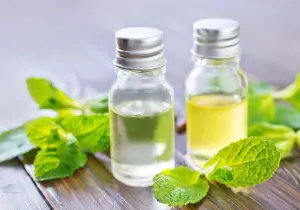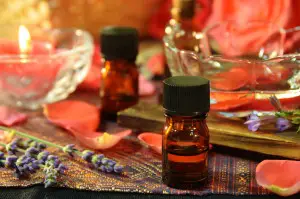It’s quite the debate. That is, whether modern natural alternatives can effectively treat sickness while improving overall health. Titling this article “essential oils vs medicine” is somewhat of a misnomer. After all, both essential oils (also known as aromatherapy) and traditional wellness options have their place. But still, the impact of each is certainly a hotly-contested debate.
First, we must dole out our formal disclosure: We do not prescribe any medications or over the counter drugs. Always speak to a physician before making any decisions on treatment. Okay, now that we have that out of the way…
There certainly is a place for traditional western medicine, whether it’s pain medication, antibiotics, or advanced drugs for serious illnesses like cancer or heart disease. But there are also homeopathic remedies that can supplement conventional treatments through 100% holistic methods.
[amazon box=”B0163GBZK8″]
Essential oils vs western medicine
To kick it off, here are some of the more common ailments people deal with in the world today:
- Anxiety and depression
- Stomach pains and aches
- Focus and concentration problems
- Cold, sinus congestion, and flu
We’ll go into the specifics shortly, in regards to which oil to use and for which purpose. So if you’re interested in the more practical components of the debate, feel free to skip the next section.
Related: Learn how natural remedies like essential oils can help with thyroid regulation.
Studies to back it up
I’m not big into the nitty-gritty research, even though there are plenty of studies out there that have measured the impact of essential oils’ holistic role in health. One study, however, by Lis-Balchin M had some interesting findings. It focused primarily on relaxation practices and the general treatment of anxious feelings.

We’ll get into the more practical use of essential oils in a moment, so without going into too much detail, here’s an excerpt of the abstract:
Stress is a significant problem in hospitals, hospices and homes for the aged and physically or mentally-challenged. Aromatherapy has been welcomed by nurses who want to become closer to their patient, as well as doctors who can refer patients with stress-related disorders who do not respond to traditional medicinal treatments.
There is strong in vitro evidence that essential oils can act as an antioxidant or antimicrobial agent or have a pharmacological effect on various tissues. Studies have shown that essential oils have an impact on brainwaves and can also change behavior. Used safely, aromatherapy can be of great benefit as an adjunct to conventional medicine or even used simply as an alternative.
The use of essential oils
[amazon box=”B06XRLR9RQ”]
There are a number of modern natural alternative medicines, including everything from supplements to hands-on physical therapy. Many homeopathic practices are effective, but there is no shortage of ineffective, borderline-sham “organic” medicinal methods.
High quality, therapeutic grade essential oils can be impactful natural wellness alternatives. Here is a list of essential oils that help with specific symptoms:
- Lavender: Works as a sedative with anti-inflammatory properties. Helps with minor pains and even occasional anxiety-related symptoms
- Peppermint: Enhances energy and concentration. Also provides minor migraine, headache, and stomach pain relief.
- Lemon: With a smooth citrusy scent, Lemon provides a cleansing effect to the air while uplifting mood.
- Vetiver: Promotes relaxation with sedative properties. Helps with general sleeplessness.
- Frankincense: Offers digestive support, relaxation, and properties that support the immune system.

In addition to these single oils, some manufacturers offer blends that combine multiple oils. For instance, consider these popular blends:
- Relaxation Blend: With calming properties, it promotes relaxation along with an invigorating sense of well-being. Includes Sandalwood, Lavender, Vanilla Bean, Ylang Ylang, Sweet Marjoram, and Roman Chamomile.
- Respiratory Blend: Smoothes breathing while relieving minor sinus congestion. Includes Peppermint, Tea Tree, Lemon, Eucalyptus, Laurel Leaf, and Ravensara.
- Protective Blend: Bolsters a healthy immune system with a natural, fragrant alternative. Includes Clove, Cinnamon, Eucalyptus, and Rosemary.
There are three primary methods for applying essential oils:
- Topical: Applying directly to the skin, generally to the neck, wrists, and bottom of the feet.
- Aromatically: Adding a few drops to a diffuser and run in a bedroom, living room, or even office space.
- Internally: Taking internally (only when using food grade oils) with water, food, etc.
Can essential oils replace traditional medicine?
As we previously discussed, essential oils are great at complementing traditional medicine options.
With exception to more serious or terminal health issues, there is an essential oil for many, many health-related benefits. They can also work as preventative health solutions.
[amazon box=”B005IHJ556″]
Taking the next step
Before you dive into the world of essential oils, consider one very important thing: Quality. This is more critical than you would think. You can get a cheap bottle of Lavender just about anywhere. But that cheap bottle of Lavender won’t deliver the therapeutic grade benefits that a high quality oil offers.
The “medicinal” benefits of essential oils all depend on quality. With a quality oil, not only will you get a purer scent, you’ll gain pure benefits that a cheap product simply cannot provide.


